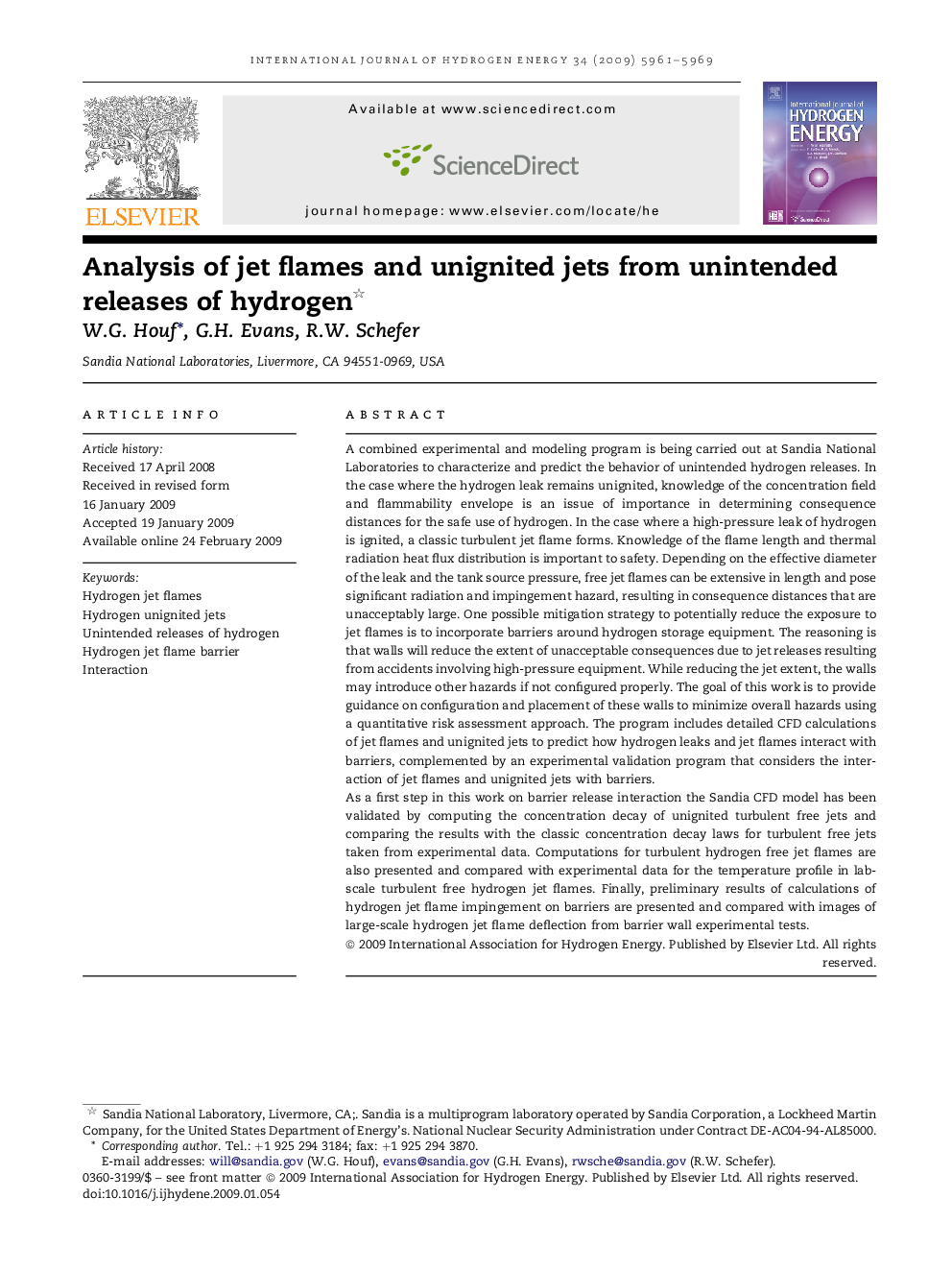| Article ID | Journal | Published Year | Pages | File Type |
|---|---|---|---|---|
| 1273731 | International Journal of Hydrogen Energy | 2009 | 9 Pages |
A combined experimental and modeling program is being carried out at Sandia National Laboratories to characterize and predict the behavior of unintended hydrogen releases. In the case where the hydrogen leak remains unignited, knowledge of the concentration field and flammability envelope is an issue of importance in determining consequence distances for the safe use of hydrogen. In the case where a high-pressure leak of hydrogen is ignited, a classic turbulent jet flame forms. Knowledge of the flame length and thermal radiation heat flux distribution is important to safety. Depending on the effective diameter of the leak and the tank source pressure, free jet flames can be extensive in length and pose significant radiation and impingement hazard, resulting in consequence distances that are unacceptably large. One possible mitigation strategy to potentially reduce the exposure to jet flames is to incorporate barriers around hydrogen storage equipment. The reasoning is that walls will reduce the extent of unacceptable consequences due to jet releases resulting from accidents involving high-pressure equipment. While reducing the jet extent, the walls may introduce other hazards if not configured properly. The goal of this work is to provide guidance on configuration and placement of these walls to minimize overall hazards using a quantitative risk assessment approach. The program includes detailed CFD calculations of jet flames and unignited jets to predict how hydrogen leaks and jet flames interact with barriers, complemented by an experimental validation program that considers the interaction of jet flames and unignited jets with barriers.As a first step in this work on barrier release interaction the Sandia CFD model has been validated by computing the concentration decay of unignited turbulent free jets and comparing the results with the classic concentration decay laws for turbulent free jets taken from experimental data. Computations for turbulent hydrogen free jet flames are also presented and compared with experimental data for the temperature profile in lab-scale turbulent free hydrogen jet flames. Finally, preliminary results of calculations of hydrogen jet flame impingement on barriers are presented and compared with images of large-scale hydrogen jet flame deflection from barrier wall experimental tests.
